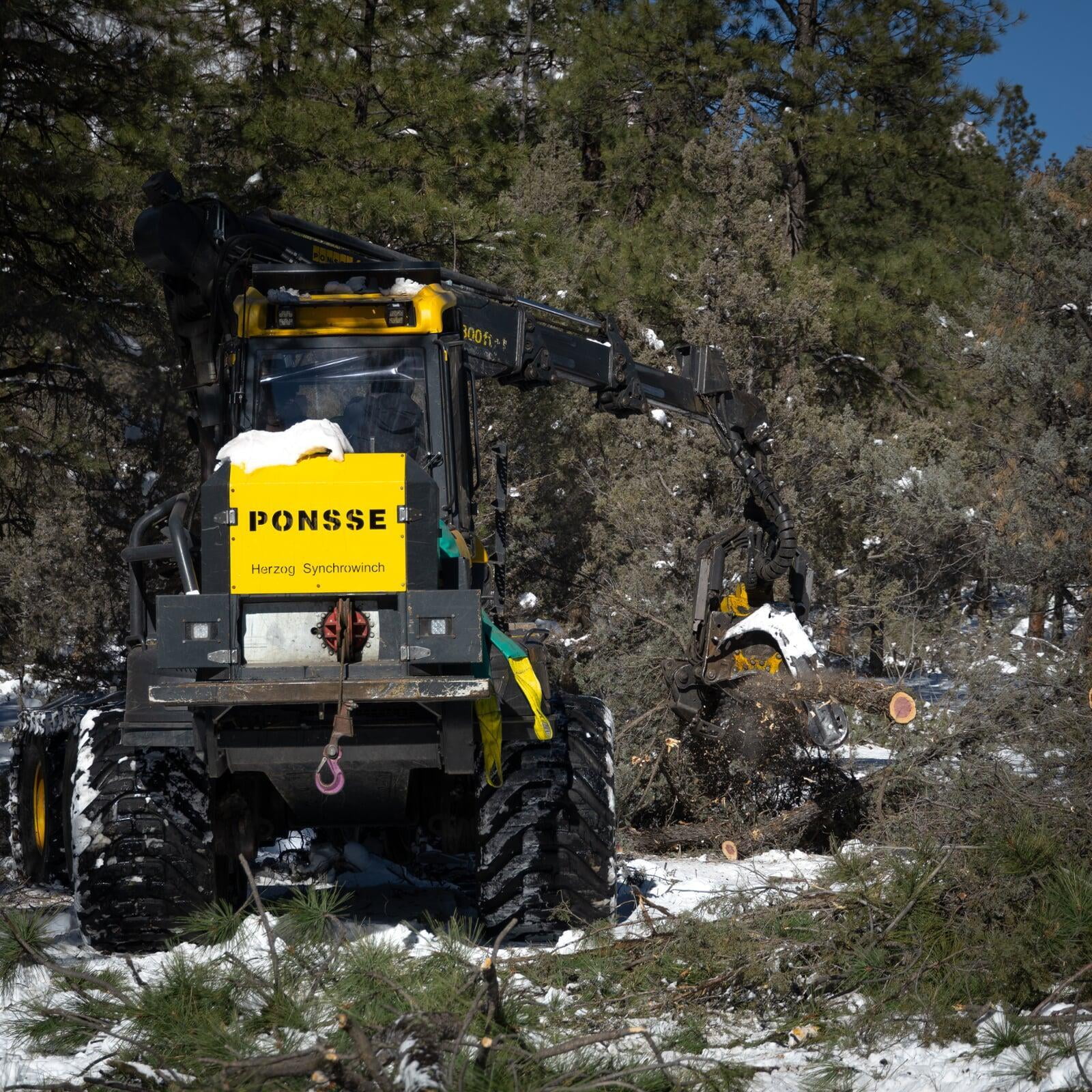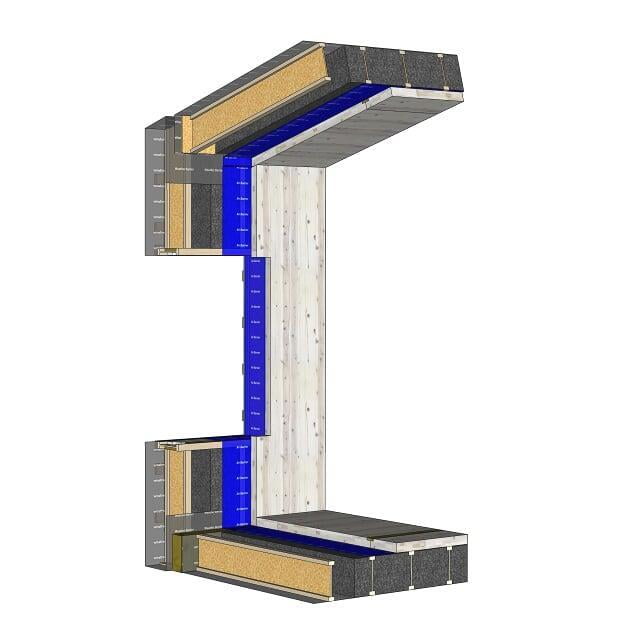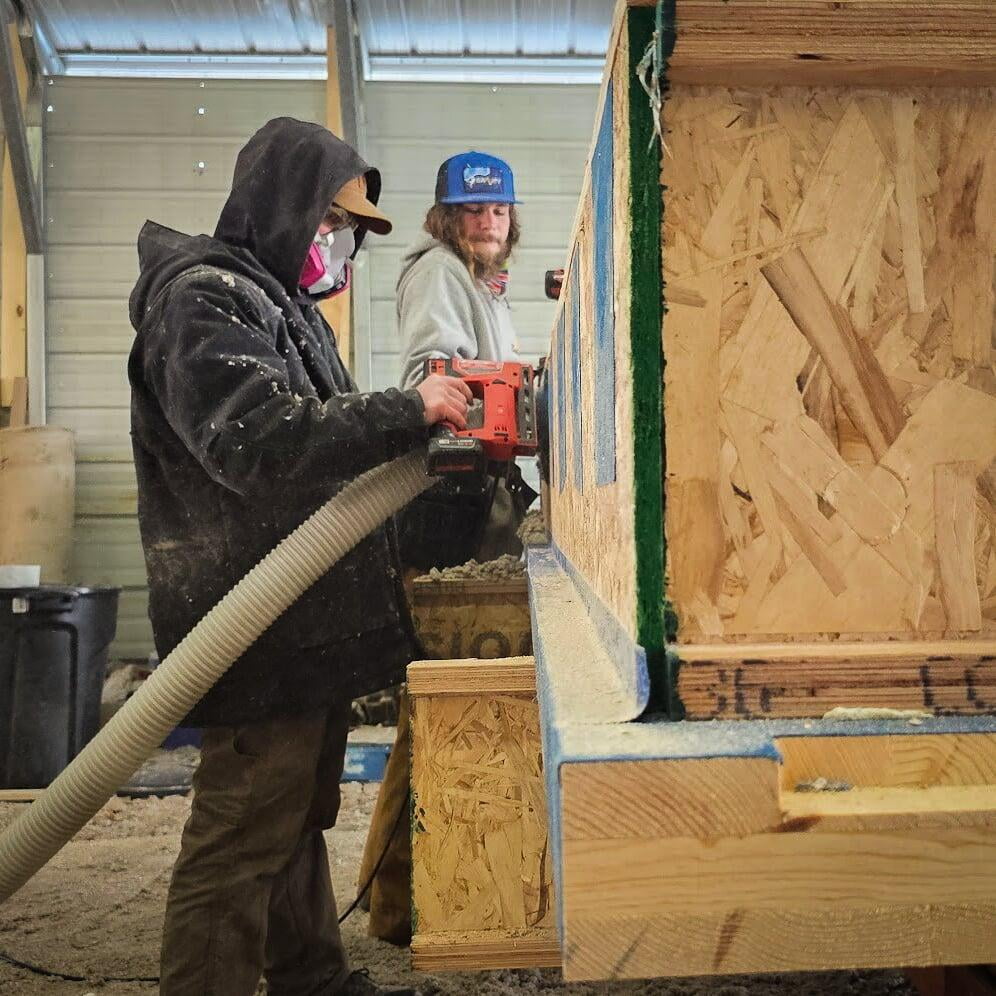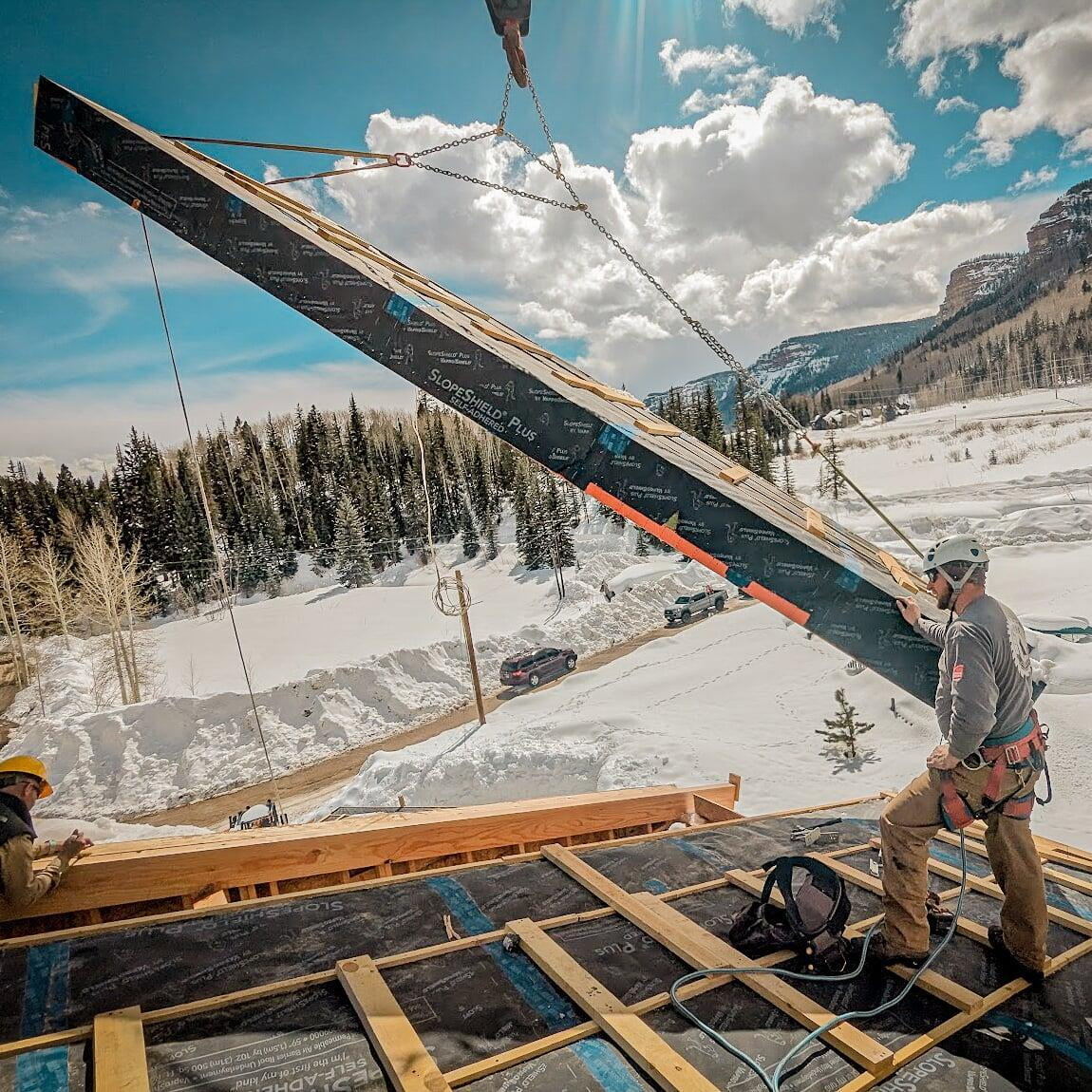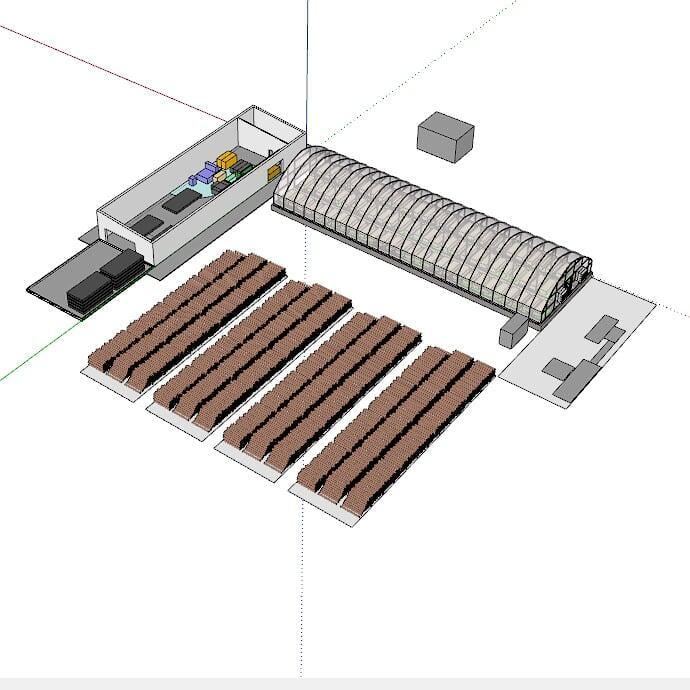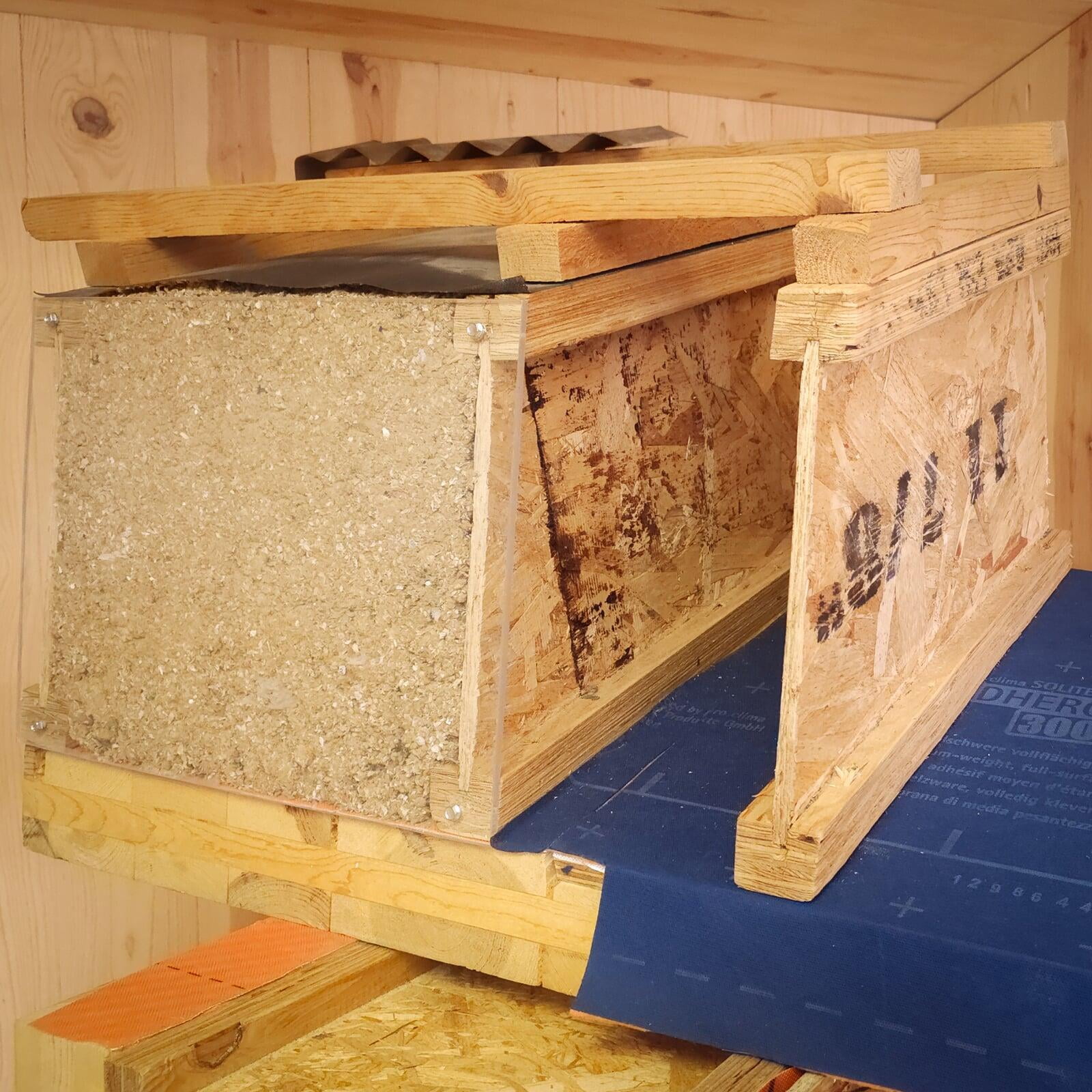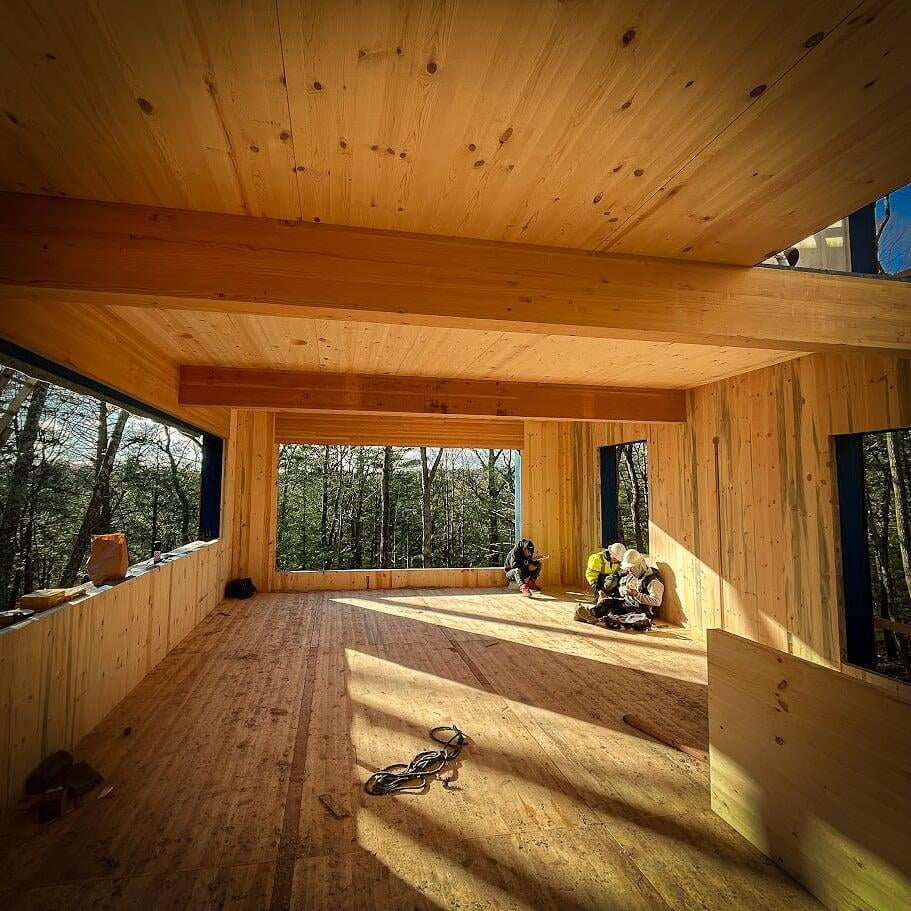Why
Why? is one of our favorite questions to ask here at Timber Age™. Even though the frequency at which this word is uttered can sometimes result in some initial frustration, it always results in improvement. The tendency to ask why when presented with a problem is an integral part of our culture and has challenged us to solve three important problems...
Problem one:
People aren't "sticking" in rural communities like our hometown of Durango, CO due in large part to the cost of living. When people aren't sure if they can stick in a community for the long term, they are less likely to invest in that community. A lack in availability of high quality, affordable housing is a major contributing factor to this issue.
Problem two:
A shrinking skilled labor force, particularly in rural communities, is only making the lack of affordable housing worse. Scarcity drives prices up, and when 4 people leave the trades for every 1 that joins, it's no wonder new buildings and remodels alike are over-budget and behind schedule in 90% of projects.
Problem Three:
The forests in the Western US are unhealthy. Historical forest management trends have resulted in our forests becoming overcrowded and more susceptible to disease and death. These tightly-bunched trees and higher levels of drought contribute to record-breaking wildfires every year. In our local forests alone, over one million board feet of wood must be removed from the forest every year for the next twenty years to approach more natural stand densities. Much of this wood was previously unmerchantable, resulting in most wood decomposing or being burned in forest fires or fireplaces.
How
Forest Fire Prevention
Forest health is a hot topic, particularly in the west. With drought, and density of trees contributing to mortality rates of trees, it is no wonder we are seeing larger wildfires threaten urban/forest interface communities more often. There is widespread belief that all logging is bad, however, when done responsibly and sustainably forest treatment can truly benefit the forest.
Modern lower impact equipment can quickly and efficiently reduce the density of a forest while leaving behind healthy trees. Many forests are two to three times more dense than a healthy forest should be. There are many factors that have contributed to this, but by thinning these forests to healthy densities we allow the forest to heal, the remaining trees to grow healthy and strong, and fire to move through underneath the canopy without getting out of control.
Timber Age™ utilizes Ponderosa Pine harvested to reduce the likelihood of fire. Through utilization in our building system, we provide a carbon-sequestering outlet for the wood. This prevents the typical destinations of burn piles, forest fires or simply rotting on the forest floor. Either process produces carbon that is released into the atmosphere. By using wood in durable building assemblies, we sequester that carbon for 100 years or more.
Diligent Planning
Diligent planning is nothing new in the building industry. As new building materials, systems, and technologies are added to structures, the level of planning must increase to accommodate the added complexity.
We are always looking for ways to bring the work forward at Timber Age™, design and planning are no exceptions. One of the issues plaguing the building industry is a tendency for projects to be over schedule and over budget. While this is in no small part due to material sourcing issues, design and planning also play a role. It is much easier for many parties involved to make changes to a structure (out of necessity or want) even after the structure has started to go vertical. This may cause no major issues, however, it can also cause costly delays to the customer.
The inherent need to finalize designs early to accommodate off-site building, combined with Timber Age's desire to improve upon the time and labor efficiency have led us to provide well defined requirements and processes for designing with the Timber Age™ Modular Building System (TAMBS).
To learn more about how to design with our system follow the link below.
Off-Site Manufacturing
Modular has become a bit of a dirty word when talking about affordable housing. Typically it invokes images of rickety structures held together mostly by the drywall on the interior that end up falling apart after twenty years, sometimes less. Even the 'high end' modular structures developed in recent years typically don't meet the standards of traditional stick built homes. In addition, shipping a box of air is logistically very inefficient.
Don't get us wrong, traditional modular and manufactured homes serve an important purpose in the market, but what if there was a better way?
By occupying a middle ground between fully factory built modules and traditional on-site building, Timber Age™ can be the best of both worlds. We build a panelized system that can be packed and shipped on a truck flat, with almost zero wasted air space while still reducing on-site build times. Off-site building also allows us to provide better, safer, consistent, and fulfilling work for our people.
Timber Age™ structures are highly durable, utilizing modern building technologies such as Cross Laminated Timber (CLT), borate treated insulation, high performance membranes, and robust quality control. A timber Age™ Building can last 50-100 years with little to no structural maintenance needed.
High Efficiency
When we say efficiency we are talking about both time and energy!
When talking about building most people think of energy when they hear efficiency. Energy efficiency is an inherent quality of every TAMBS structure. Our standard panel is thermally broken, has an R-52 insulative value and is air sealed using two membrane layers. This not only future proofs our system for years of building code updates, it makes the system easily adaptable to Passive House standards.
Off-Site building allows us to pull much of the work of building a house forward in the process. This enables us to have a building dried in after a matter of days instead of weeks, or in some cases months with traditional building. Time to occupancy is reduced with the ability to perform site prep and assembly of structural components at the factory simultaneously. Our panels come up to 10' x 25' sections, enabling entire walls and roof pitches to be set at once. This not only cuts down on time to occupancy, but also provides a better environment for the tradespeople still required to do work onsite.
Community Focus
Part of the Timber Age™ business model from the beginning was localized manufacturing. From material sourcing to end consumer, a Timber Age™ facility aims to operate within a radius of a few hundred miles rather than a few thousand.
By limiting the size of a manufacturing facility we can ensure that the community where it is built can support it with both labor and raw materials without creating a boom and bust situation. Additionally, sourcing materials from a local forest and other local businesses cuts down on transportation costs, embodied carbon, and supply chain risk. Keeping facilities small and localized also enables us to run small scale experiments to improve processes without risking the productivity of a $50 million+ facility.
Large facilities require large start up costs and potentially years of construction and equipment sourcing and setup to become operational, let alone profitable. A typical 5k sq ft Timber Age™ facility can be built, equipped, and staffed for 6 months of start up operations for a fraction of the cost of the equipment of a typical Mass Timber or modular housing production facility.
When Timber Age™ was founded we did not set out to create what we now call TAMBS, it is an ever evolving solution to the problems and goals stated above. The standard panel assembly consists of a 3 inch thick Cross Laminated Timber (CLT) panel, air resistant barrier (ARB), I-Joists, cellulose insulation, and another layer of either ARB, or weather resistant barrier (WRB). The system arrives on site cladding ready.
Off-Site Construction Done Better
Unfortunately, modular and manufactured construction have become associated with lower quality in recent years. Even the higher end modules tend to use, at most, code minimum construction that is inefficient to transport, inefficient to heat and cool, and not designed to last more than 50 years at most. TAMBS attempts to bridge the gap between traditional and off-site construction and address some of these shortcomings by providing a durable, efficient, panelized system that can last 100 years or more
Old Technology at a Community Scale
Cross Laminated Timber (CLT) is the backbone of TAMBS. This incredible material allows us to utilize locally harvested Ponderosa Pine, a species not typically used in buildings today. Using local wood harvested for fire mitigation allows us to sequester carbon from trees that would have otherwise been burned or left to rot, releasing that carbon in tothe atmosphere. By shortening our supply chain we are also able to reduce transportation costs, lower the embodied carbon in our structures.
Easy Button for Future Code Compliance
With 12 inches of dense pack cellulose insulation and two layers of continuous membrane, TAMBS is ultra efficient. Achieving and insulation value of R-52 and 10x the air tightness of typical construction, will surpass code requirements for decades to come.
Scalable Structural Components
By utilizing a base CLT panel size of 5' x 10' and combining them with structural I-Joists in up to 10' x 25' assemblies, we are able to accommodate almost any dimension for a structural envelope. Starting with smaller components also allows us to utilize smaller facilities more suited to rural communities and residential construction.
Is TAMBS the right choice for your build?
Are energy efficiency and sustainability important to your project? The fact of the matter is that there are cheaper ways to build a code compliant home than TAMBS, but it's likely that this home will need significant repairs in 30 years and will use significantly more energy and carbon over its lifetime. Our system was designed because we understand that we can't keep building this way if we want to respond to climate change. If this IS important to you, then TAMBS will likely be one of the most affordable ways to make the biggest impact possible with your project.
Is your project residential or commercial? At this time, TAMBS is designed primarily for residential use. While some commercial construction may be feasible, if your project requires sprinklers or a UL listed system TAMBS is likely not the right choice at this time. We hope to offer a UL listed project in the future, so please check back!
Is your project over 3 stories above ground? Similar to above, TAMBS was designed specifically for low-rise construction which we consider 3 stories or less. Our CLT panels were designed as a part of a study conducted by Fort Lewis College in Durango, Colorado with the intent of creating a product that could serve residential projects while maintaining a high degree of flexibility in the manufacturing process.
How far is your site from a TAS manufacturing facility? Our system was designed for ease of shipping and installation making it feasible to build projects far from our facilities from both a cost and carbon standpoint. We recently built a 1,200 sf home that was 2,100 miles away and shipped the entire building on one truck, assembling it in 2.5 days. While this may be feasible, the cost and carbon impact of shipping your project should be considered if your are not near our facility in Durango, Colorado.
If you feel building with Timber Age™ is right for your project, follow the links below to learn about designing, building, and living with a Timber Age™ home.


